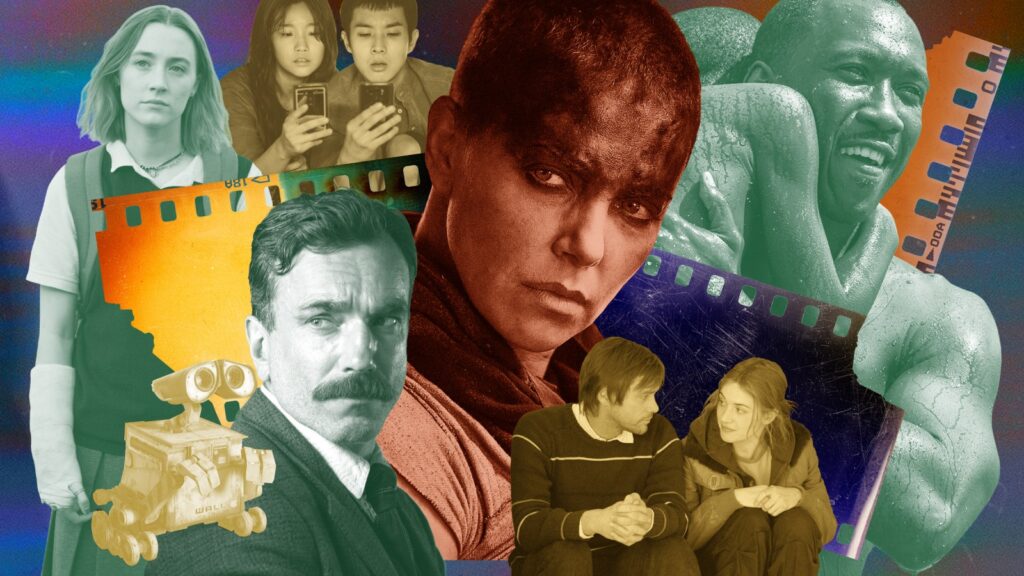As we navigate through the 21st century, the landscape of cinema has undergone profound transformations. From technological advancements to shifts in audience consumption, the film industry is markedly different from what it was 25 years ago. The phrase “cinematic universe” has become a staple, reflecting both the art form’s evolution and its role as mass entertainment. Despite these changes, the power of film to captivate and transform audiences remains undiminished.
Rolling Stone contributors have compiled a list of the 100 best movies of this century, capturing the essence of what makes cinema an enduring art form. These films continue to reflect our humanity, spark imagination, and inspire emotional responses, whether viewed in a theater or at home. The list is a living document, subject to change as new masterpieces emerge.
The Changing Face of Cinema
The 21st century has seen the film industry declare itself both dead and thriving multiple times. Technological innovations have revolutionized how movies are made and consumed. Streaming services have altered viewing habits, while the rise and fall of stars and intellectual properties highlight the industry’s volatility. Despite these fluctuations, the core of cinema—its ability to mirror society and evoke deep emotions—remains intact.
Take, for instance, Kenneth Lonergan’s Margaret, a film that captures the complexities of adolescence and privilege in New York City. Shot in 2005 and released in 2011, it showcases Anna Paquin as a teenager grappling with guilt and trauma after a tragic accident. Lonergan’s operatic screenplay delves into universal themes, resonating with audiences worldwide.
Exploring Diverse Narratives
Films like Winter’s Bone and Norte, the End of History demonstrate the medium’s ability to explore diverse narratives and settings. Debra Granik’s adaptation of Daniel Woodrell’s novel follows Ree, played by Jennifer Lawrence, as she navigates the dangerous backwoods of the Ozarks. The film highlights the intersection of tradition and modern challenges, such as the meth trade, while providing a gripping thriller experience.
Meanwhile, Lav Diaz’s Norte, the End of History offers a Dostoevskian tale of crime and punishment in the Philippines. The film’s leisurely pace and focus on the human condition make it a compelling watch, emphasizing the endurance of people amidst hardship and injustice.
International Perspectives and Cultural Reflections
International cinema continues to enrich the global film landscape. Pablo Larraín’s No satirizes the 1988 ad campaign that contributed to the downfall of Chilean dictator Augusto Pinochet. Gael García Bernal stars as a marketer tasked with promoting the pro-democracy “No” vote, offering a colorful take on media’s role in political change.
In Brazil, City of God by Fernando Meirelles and Kátia Lund presents a gritty portrayal of Rio de Janeiro’s favelas. The film’s raw depiction of violence and poverty, combined with its innovative visual style, made it an international sensation and a box-office success.
The Enduring Power of Storytelling
Despite the industry’s changes, the power of storytelling remains central to cinema’s appeal. Films like Toni Erdmann and The Hurt Locker demonstrate the medium’s ability to blend humor, drama, and tension. Maren Ade’s Toni Erdmann offers a comedic yet profound exploration of family dynamics and corporate life, while Kathryn Bigelow’s The Hurt Locker provides a nerve-jangling depiction of wartime procedures in Iraq.
As we look to the future, these films remind us of cinema’s unique ability to reflect our world, challenge our perceptions, and evoke a wide range of emotions. The list of the 100 best movies of the 21st century serves as a testament to the enduring power of film in an ever-changing world.
About The Author
 Donkey Kong Bananza: A Must-Have for Nintendo Switch 2 Enthusiasts
Donkey Kong Bananza: A Must-Have for Nintendo Switch 2 Enthusiasts California Judge Dismisses Jay-Z’s Lawsuit Against Lawyer Tony Buzbee
California Judge Dismisses Jay-Z’s Lawsuit Against Lawyer Tony Buzbee Hellmann’s Mayonnaise Unveils Art Gallery Pop-Up with Kareem Rahma
Hellmann’s Mayonnaise Unveils Art Gallery Pop-Up with Kareem Rahma Deadly Fire at Indian Pharma Factory Claims 39 Lives, Sparks Investigation
Deadly Fire at Indian Pharma Factory Claims 39 Lives, Sparks Investigation Love Island USA’s Secret Code: Decoding Cierra and Nic’s “Journey”
Love Island USA’s Secret Code: Decoding Cierra and Nic’s “Journey”